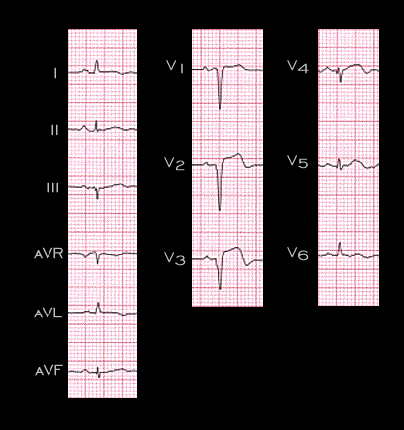
The ECG shown here was shown previously (see page 6.1.6). It is from the 74 year old woman with an acute myocardial infarction that was caused by occlusion of her left anterior descending coronary artery. The QS complexes in leads V1, V2 and V3 permit localization of the infarction to the interventricular septum and anterior wall of the left ventricle.
